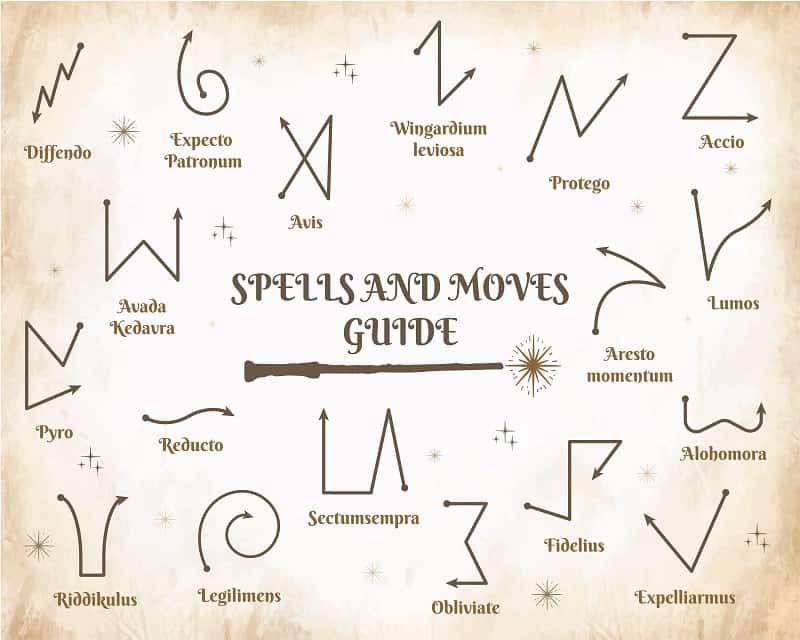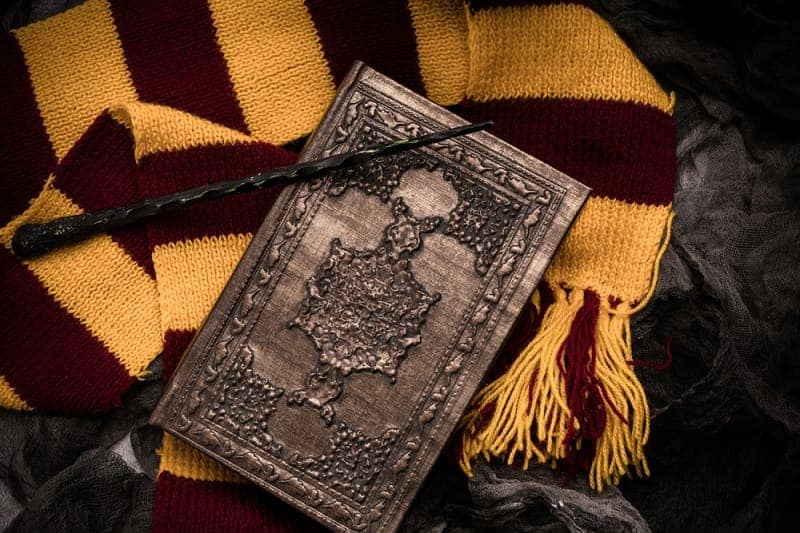As readers of the Harry Potter books know, wizards and witches travel far and wide to Mr. Ollivander’s shop to get their wands. These wands complete the magician and enable their powers to manifest.
Yet, the magic is not vested in the wand. That comes from the magical person. Given these inherent magical abilities, a witch or wizard may opt for wandless magic as an alternative.
What is the difference between wandless and wand magic? And, is one better than the other? Read more below to find the answer to both questions.
Contents
Wandless Magic in Harry Potter
As the name implies, wandless magic is performed without a wand typically by wizards and witches who know wand magic. Wandless magic was not a normal subject taught at Hogwarts, but books on it were in the library. It is a more difficult form of magic that can have unanticipated results.
Usually, only top-skilled wizards like Albus Dumbledore used wandless magic. This compilation gives us some examples of when Harry Potter and Dumbledore used it in the films, both with and without hand movements. The use of wandless magic occurs much more in the films than in the books.
Voldemort, for example, used wandless magic to knock Harry to the ground with a wave of his hand in Harry Potter and the Goblet of Fire. Hermione Granger is a top-skilled witch who used wandless magic in Harry Potter and the Half-Blood Prince. Grindelwald may use it the most in the Harry Potter series.
J.K. Rowling described this magic as more sophisticated than wand magic. And, fans agree, posting that wandless magic is more interesting than the wand kind.
In certain parts of the magical community or wizarding world, separated from Muggle society, wandless magic was the main way to produce spells. This fact also gives a more elite status to wandless magic.
So, wandless magic is performed by the top wizards and witches, more advanced than wand magic, and is more captivating to fans.
Wandless magic is also a natural-born skill of wizards and comes in handy when a wizard loses their wand.
So, wandless magic appears to be superior. Yet, it can be more dangerous, uncontrollable, and it could lead to destruction.
Wand Magic in Harry Potter
Wands are semi-sentient instruments that witches and wizards use to channel their magical powers. Wands help direct magic, making spells more accurate and powerful.

Every wand consists of wood that is imbued with a magic substance. Usually, wand magic is accompanied by an incantation, and most European wizards and witches use wands to cast spells and channel their magic.
Wand magic is thus more widespread and versatile. This clip depicts when Harry got his first wand and the power it held for him. The wand was a brother of Lord Voldemort’s wand and grew in power as Harry progressed.
For Harry, wand magic was essential to his wizarding powers and casting advanced spells.
Transfiguration, for example, works better with a wand. This magic alters the appearance of an object or person by changing its molecular structure.
Charms are another form of magic that is hard to do without a wand. This spell alters what an object does, such as the Levitation Charm making someone levitate.
Harry became skilled enough to cast the Shield Charm that protected him against his attacker’s spells.

So, these powerful spells could not be carried out well without the use of a wand. Wand magic is more controllable, reliable, and effective.
Wandless Magic vs. Wand Magic
Wandless and wand magic have their purposes and merits. Deciding which one is superior is a matter of preference.
On one hand, wandless magic reflects a more advanced form of wizardry, one only highly-skilled witches and wizards practice. Spells can be inflicted with mere words or hand gestures, so no wand is required.
These spell casters are better than “the average magician” and regarded as “exceptional spell casters,” like Sirius Black, Severus Snape, and Harry Potter. These wizards are a clip above most, and wandless magic is a reflection of their skill level.
On the other hand, wandless magic is emotionally driven and could lead to deadly results, which were not intended. Thus, wandless can be more powerful and is associated with more skill but is also less controllable and does not always bring the desired effect.
Wand magic, in comparison, provides more precision and intention that one can better control. A wizard meaning no permanent harm would probably prefer the wand then.
Carrying out the common spell Apparition, for example, is better done with a wand because of its “tricky” mental elements that if not carried out well can lead to body parts in two different places.

If wizards are highly practiced and willing to take risks, then they may prefer wandless magic. For everyone else, wand magic would be preferable.
Wand and Wandless Magic
In Europe, wand magic is the preferred mode of casting spells. Wand magic is a more controllable form of spell-making that can better carry off Transfiguration and Charms.
Used in other parts of the wizarding world, wandless magic is a more complex form of spelling-making that is potentially more powerful. Yet, it is also less controllable and hence more dangerous.
We can think of the wand as the conduit for most magic, while the wandless is a more reserved, risky technique. Only a wizard or witch can decide which is better.

Todd Wahlstrom is a creative and analytical freelance writer and life-long Star Wars fan who has expanded into writing about the Marvel Cinematic Universe. He has written about recent shows such as The Mandalorian and Andor and classic topics like Darth Vader, the Jedi, and Boba Fett. His recent articles include the MCU’s Iron Man, Captain America, and Thor. Todd is the author of a non-fiction book, holds a Ph.D. in history, and enjoys hiking, running, and reading about science.
